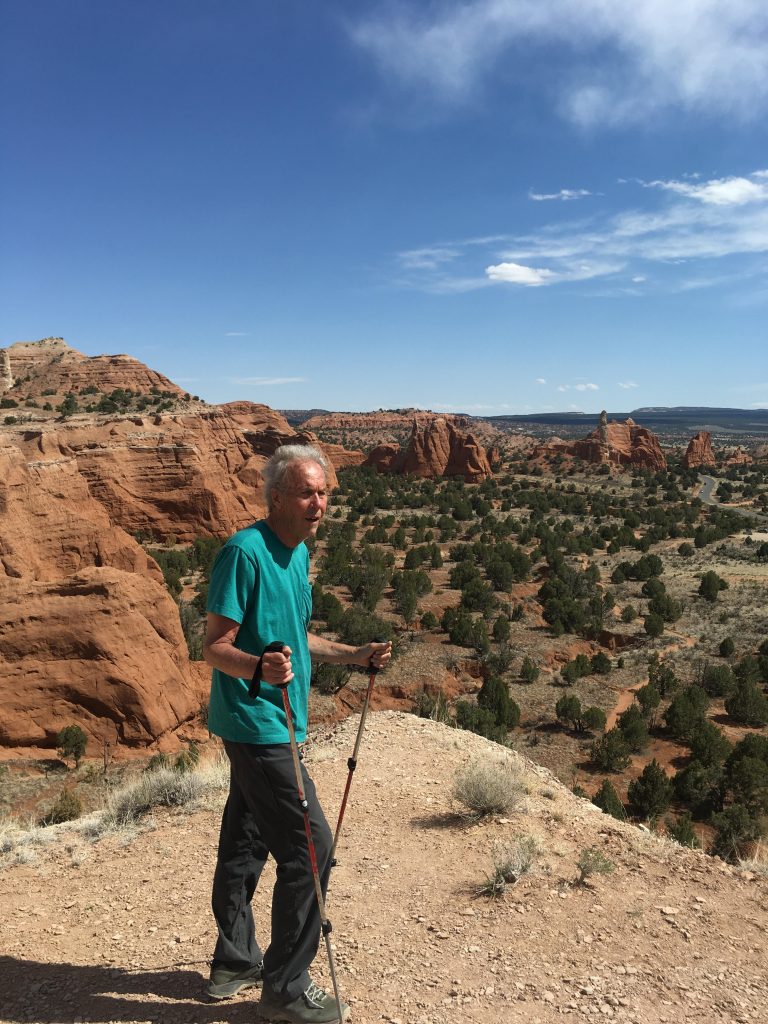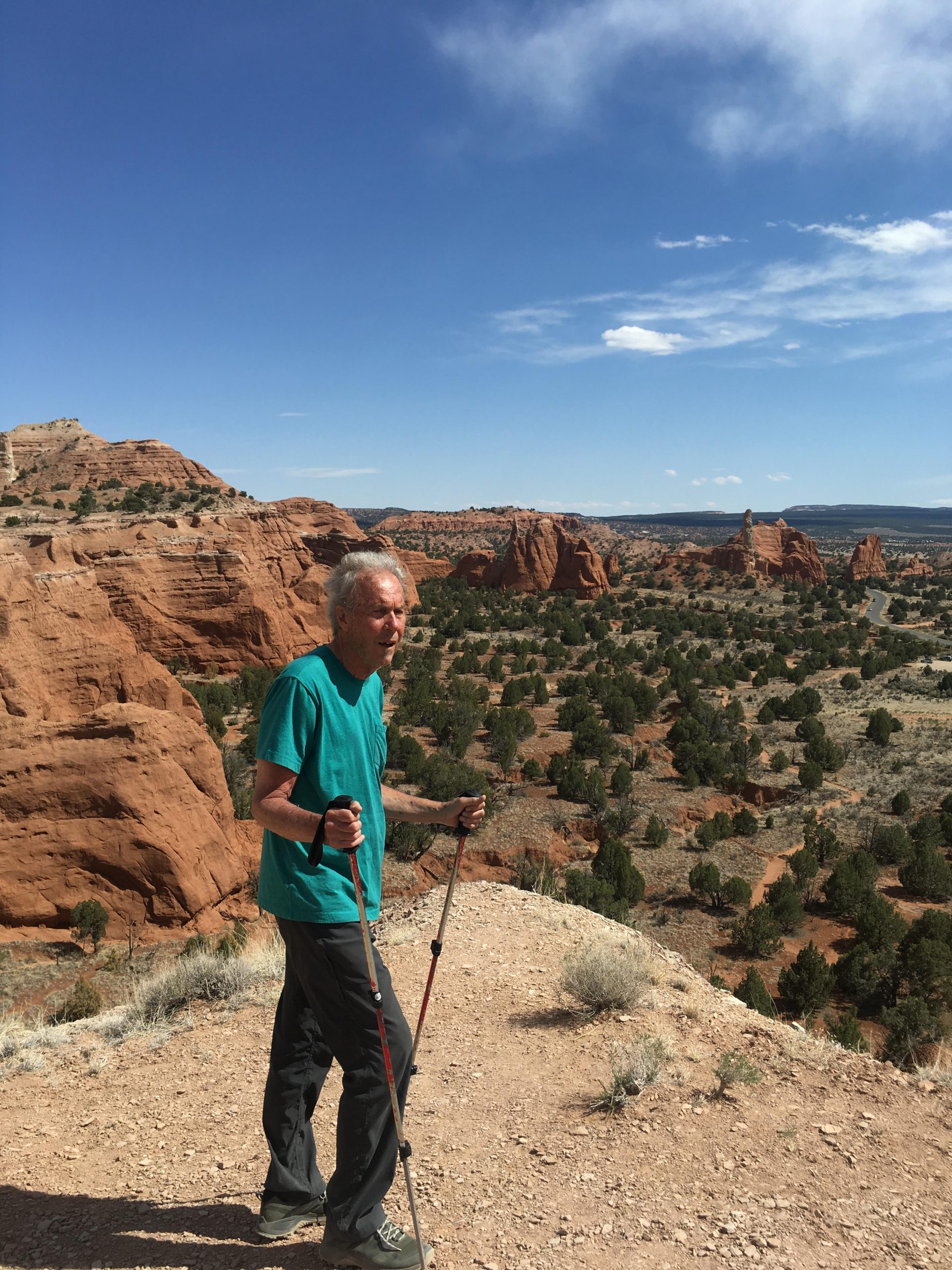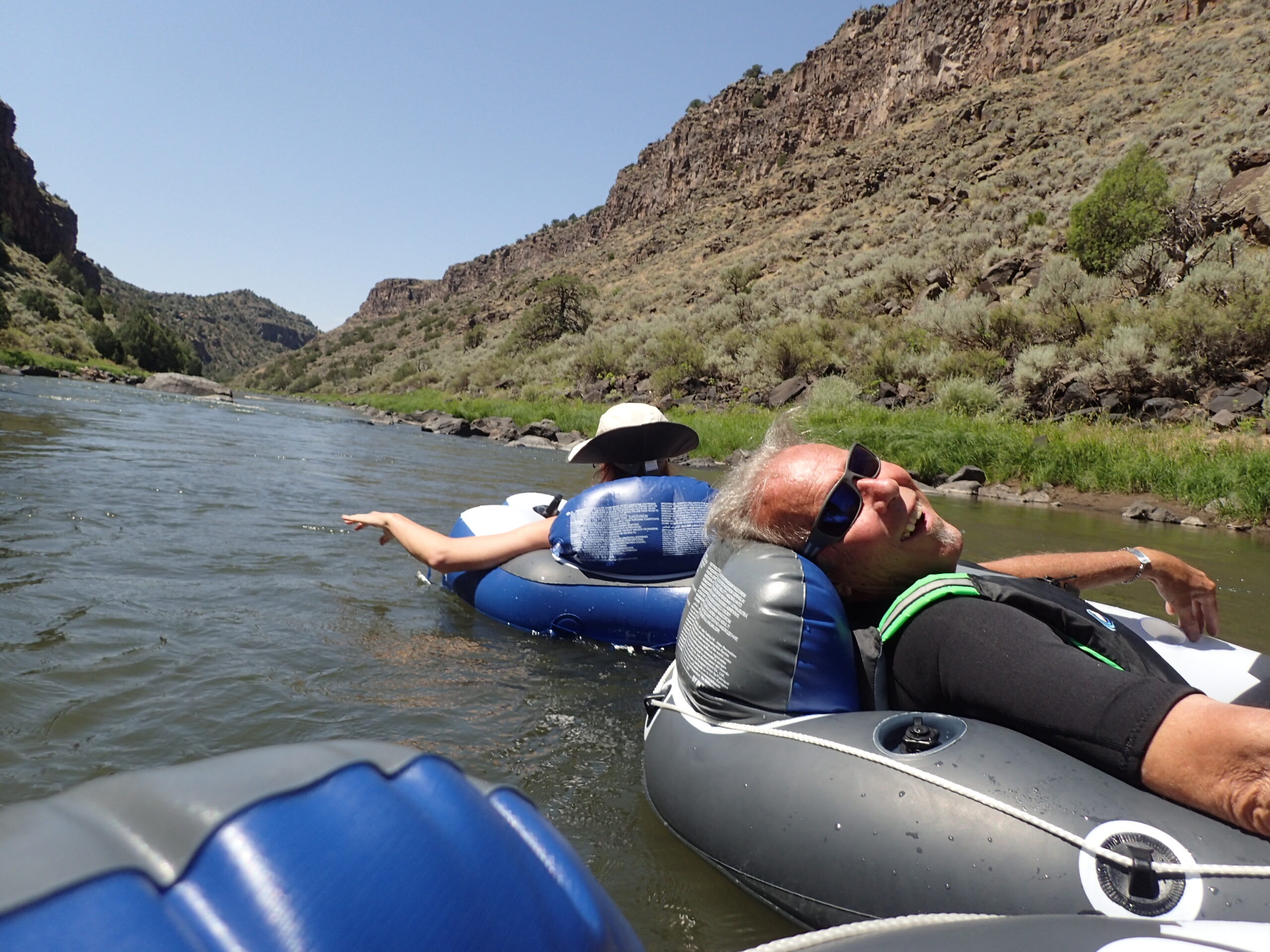
Parkinson’s is a disease of ups and downs and continuous change. The trajectory of this disease does not go in only one direction.
Living with Parkinson’s is never an easy experience.
Living well with Parkinson’s demands creative thinking and a hopeful spirit, both of which can be cultivated. I am going to share ways that we used relatively affordable and available material items to help my husband, Andy, live well with Parkinson’s.
Walking is a basic function that most human beings both rely on and enjoy. Living with Parkinson’s symptoms has at times made it impossible for Andy to walk. There have been years when he had to spend most of his time in a chair, but surgery, medication and encouragement from his family and friends gave him the ability and desire to keep trying. In his case, persistence and a little help from assisting devices led to success.
For Andy, first medication and later, surgery allowed his body to have the capacity to walk again. It was scary. His halting tentative steps were at first painful to watch, but very shortly the fear that made it seem painful was transformed by the courage it took for him to try.
As his family, it was our job to believe in all the possibilities of his life and to quell the negative and fearful voices.
Spending time and money to find him the right shoes was essential. After years wearing mostly house slippers, we went shopping at REI and discovered a walking shoe with solid support and heavy duty tread. These shoes cost about $120.00 and were worth every penny. We shifted to the hiking pole section and purchased and adjustable pair of Black Diamond poles. Being adjustable, they would be able to fit inside a suitcase and if walking proved to be something Andy could do again, we intended to travel.
We started him off slowly and he walked his first steps from our front door to the end of our driveway and back. Gradually he increased that up to ten laps and then twenty laps throughout the day. Parkinson’s stops a person’s arms from swinging naturally in an alternating rhythm and although sometimes Andy walked putting both poles forward at the same time, the mere reality of having the poles made him use his arms in opposite rhythm of his legs (in other words as a normal healthy gait) more often than not.
We graduated to walking further and onto hiking trails with uneven ground and lots of rocks.
We learned the hard way that Andy’s walking endurance had a limit before he would lose coordination. One walk up a river canyon, with our dog, turned bad when we went too far. After a long rest on a rock, Andy leaned on me and we shuffled our way down to the car.
We learned his capacity to walk about two miles at a time was reliable.
I’ve started carrying a lightweight foldable camping chair as we walk so that Andy can take a sitting break whenever he needs to.
With Parkinson’s Andy has successfully walked in England to pick up groceries, around historic castles, all over the Scottish Highlands, up and down hills in Catalina Island, CA. He regularly walks the rim trail, in snow, at Wild Rivers National Monument near our home and continues laps in our driveway.
Use it or lose it! It’s not over until it’s over! See what happens when you keep your spirits up. I know you will sometimes be happily surprised at what is possible.
Parkinson’s is a disease of ups and downs and continuous change. The trajectory of this disease does not go in only one direction.






Be the first to reply